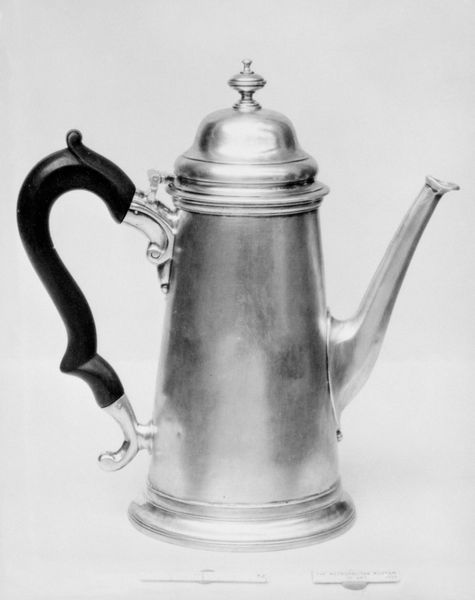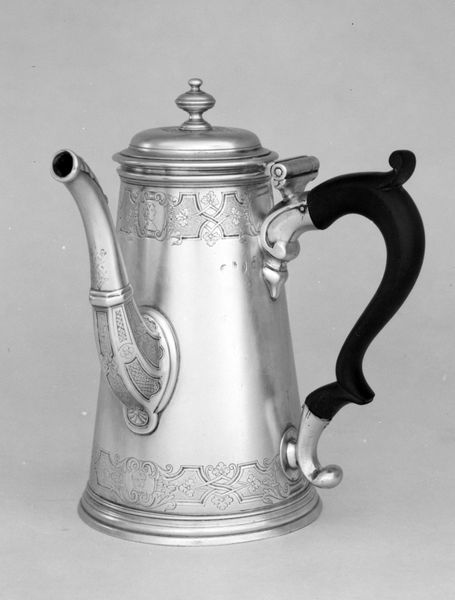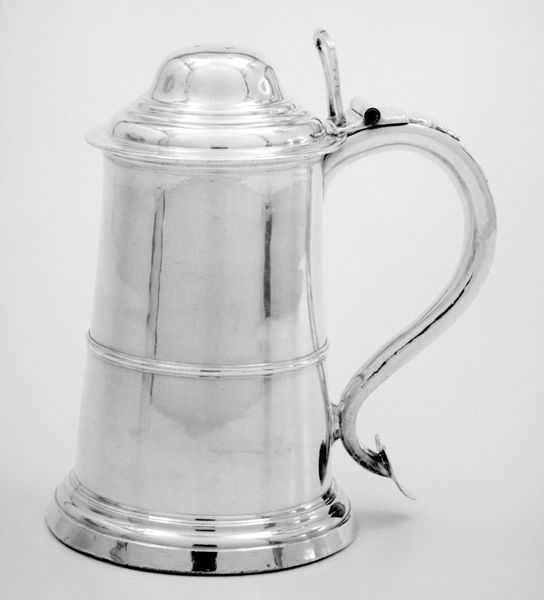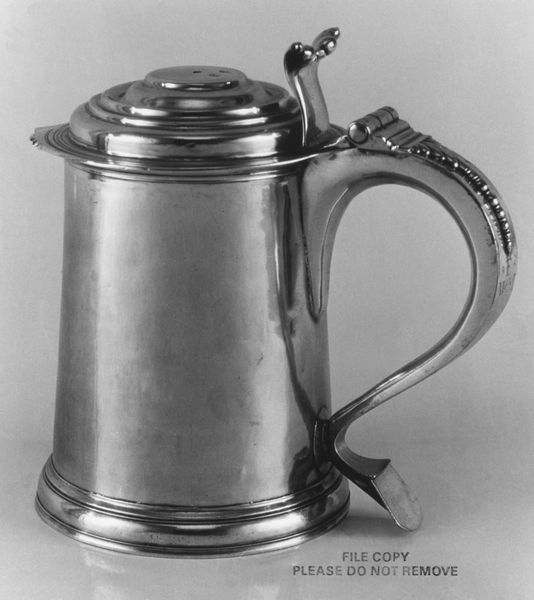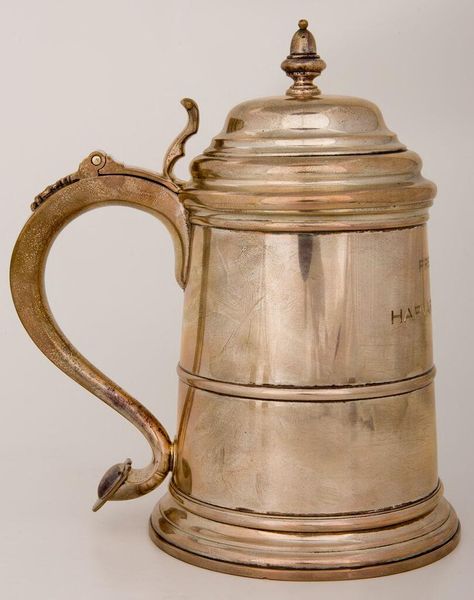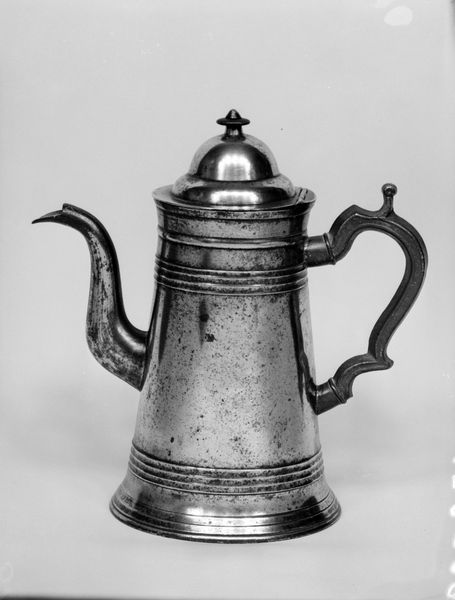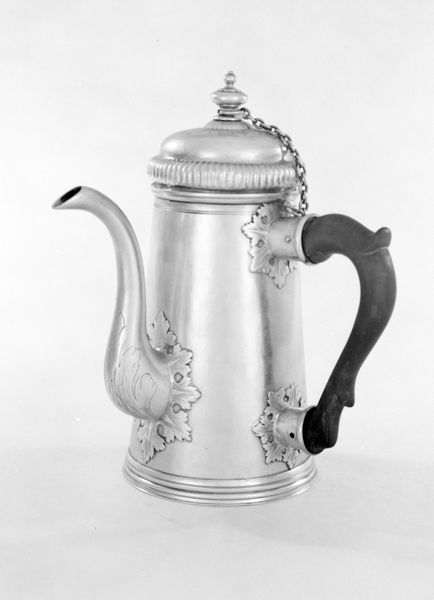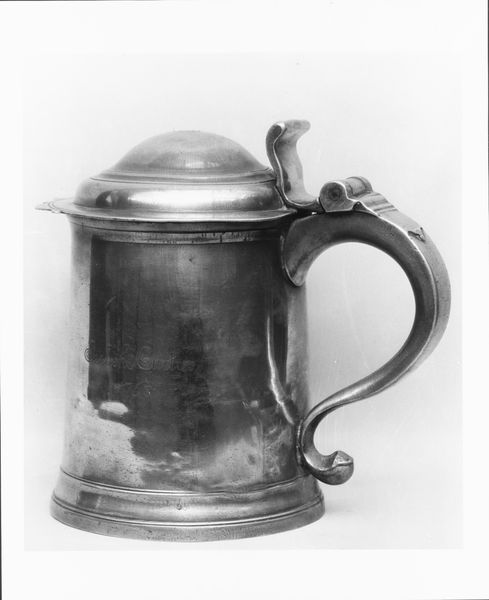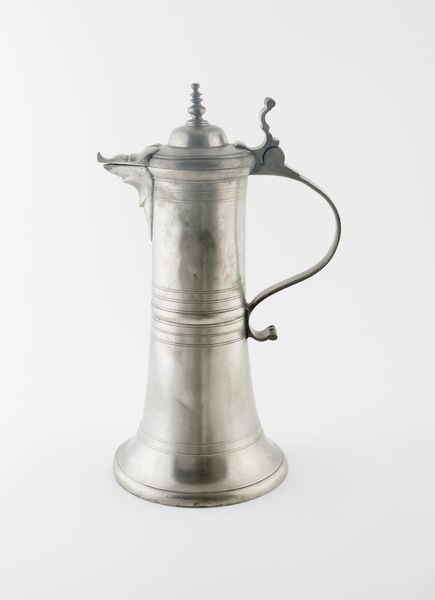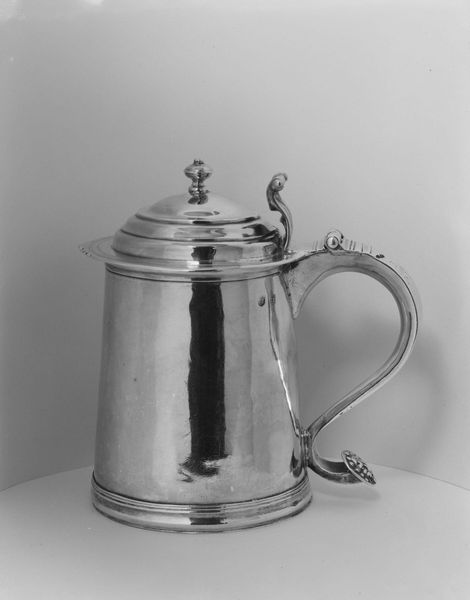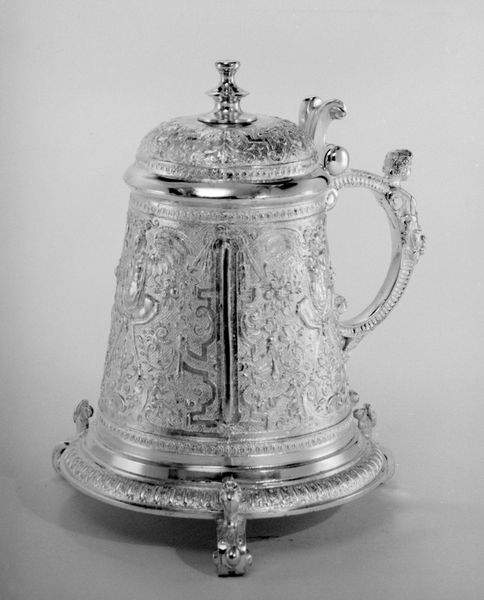
#
3d printed part
#
swirl
#
sculptural image
#
warm monochrome
#
culinary art
#
black and white theme
#
appetizing
#
stoneware
#
black and white
#
united-states
#
food photography
Dimensions: H. 12 1/4 in. (31.1 cm)
Copyright: Public Domain
Curator: Let’s examine this two-quart flagon crafted by Boardman and Company, dating approximately from 1825 to 1827. You can find it here at the Metropolitan Museum of Art. What's your initial reaction? Editor: Stark. Simple, in some ways, yet incredibly refined. It looks both functional and ceremonial, almost imposing with its height. Curator: Indeed. We need to consider the societal context in which this piece was created. Early 19th century America was navigating its identity, forging its own aesthetic while still deeply connected to European traditions. Boardman and Company were prominent pewter manufacturers; their work reveals much about class, consumption, and the emerging American marketplace. Editor: Precisely. Who were these flagons intended for, and what kind of social rituals did they facilitate? The materiality speaks volumes, doesn't it? Pewter wasn’t silver, suggesting a certain level of affluence, but not extreme wealth. This piece tells a story of middle-class aspiration, of partaking in—but also perhaps defining—new forms of American social life. Curator: And the design! The flagon has these clean lines with restrained ornamentation, reflecting the move toward more Neoclassical forms—popular among rising merchant classes eager to display a certain level of cultivated taste, distancing themselves from the excessive displays of aristocracy. Editor: Absolutely, there is power in this form of quiet presentation. I'm interested in thinking about how women interacted with this object too. Were they pouring from it? Who were they serving and how can this seemingly simple object reflect patriarchal societal structures? Curator: It provokes further questions. Examining its journey into the museum context also adds another layer. How did it become an object worthy of display? Which narrative did the museum intend to perpetuate? Editor: Exactly. By interrogating the journey of this flagon, from maker to user to museum piece, we start to untangle the complex webs of power, class, and identity in 19th-century America, providing greater meaning to the object’s significance. Curator: It ceases to simply be a vessel. It becomes a looking glass into history, forcing a continuous dialogue of cultural expectations, and class stratifications. Editor: Which invites all of us to be part of the continued process of redefining assumptions through a social, and politically conscious lens.
Comments
No comments
Be the first to comment and join the conversation on the ultimate creative platform.
